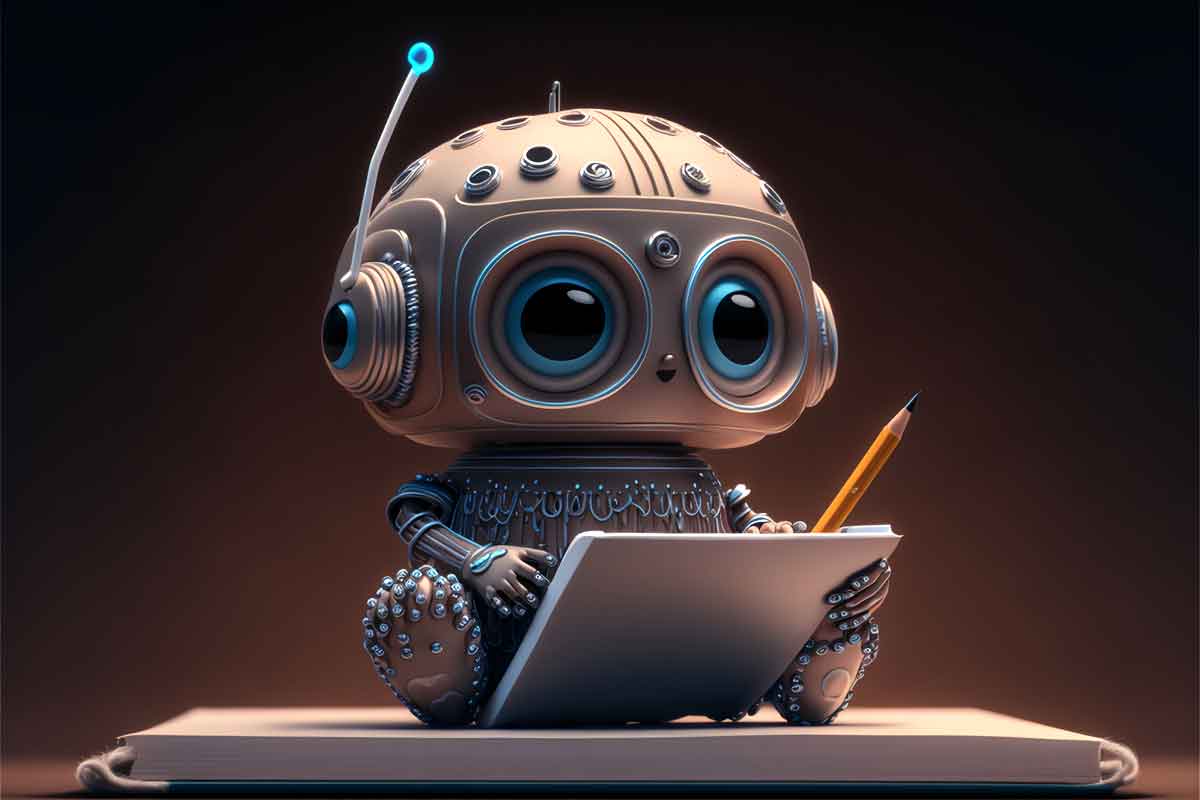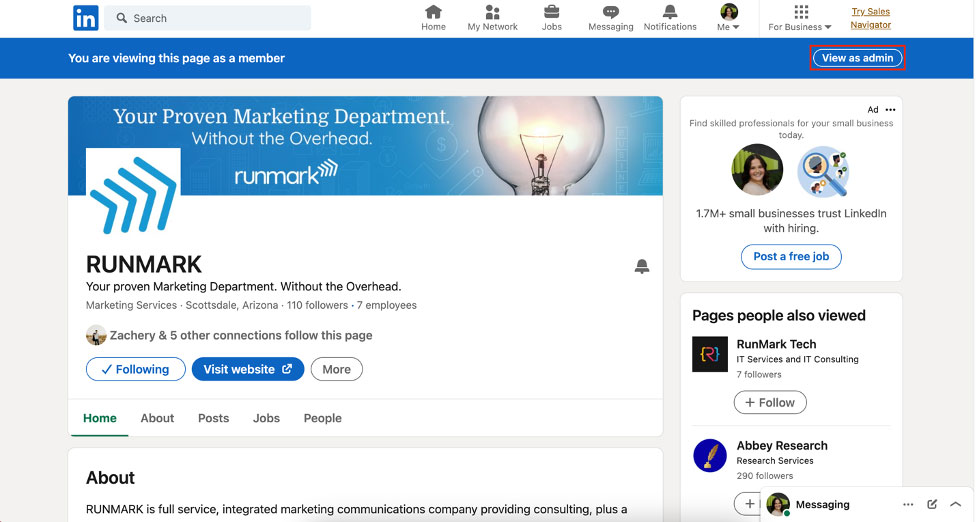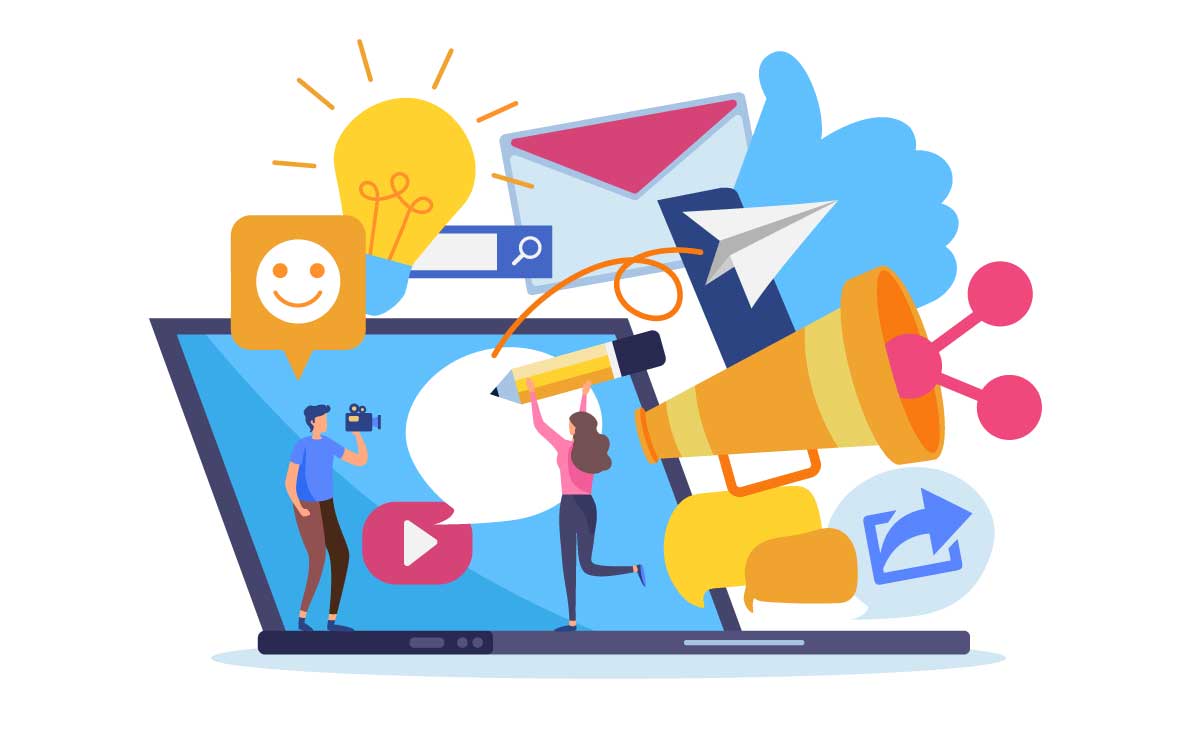Unless you’re living under a rock, you’ve heard the buzz about generating content with AI tools like ChatGPT—have you tried it yet? We have seen lots of negativity surrounding it, but the fact is, it is here to stay.

This article aims to educate business owners, content creators, and marketers about using AI (artificial intelligence) to help you generate content. ChatGPT is the ultimate chat buddy that processes information and generates human-like responses in real time. There are also many other AI tools that you can use to save time:
- Stockimg.ai generates logos, banners, and more.
- Elevenlabs.io is the most realistic AI speech software, giving the most compelling, life-like voices from your text input.
- Usechannel.com allows you to ask any question in English and automatically get back an answer in data form.
- Papercup.com translates videos in 70+ languages with the best quality voices.
- Clipdrop.co removes objects, people, text, and more from photos.
- Booth.ai generates quality photos for brands with or without the text in seconds.
- Clickable.so creates eye-catching visuals and ads in seconds. No graphic design experience is needed.
- Rationale.jina.ai is a personal decision-making assistant that gives you pros and cons for any decision in as little as 10 seconds.
Use Artificial Intelligence to Improve Efficiency
How can ChatGPT be used for marketing?
ChatGPT is extremely useful for content marketing purposes. We used ChatGPT to write an outline for this article! The possibilities are endless. Ask the chatbot to write:
- Attention-grabbing titles
- Call-to-actions
- Social media posts
- Email subject lines
- Emails
Most importantly, ChatGPT is an excellent tool for brainstorming ideas. While it is NOT a writing tool, and you cannot (and should not) take the content and post it on your site verbatim, you can use it to help you streamline your content creation process and save you a boatload of time.
AI in Search Engines: Enhancing User Experience and Relevance
Artificial Intelligence (AI) is revolutionizing the way search engines operate, significantly improving user experience and search result relevance. By leveraging sophisticated algorithms and machine learning techniques, search engines are becoming more efficient at understanding user intent and delivering accurate results.
How are search engines using AI?
Almost every aspect of your experience with search engines is powered by AI. Google, for instance, constantly invests in AI research and development and uses AI to improve its search engine in the following ways:
- Understanding search queries: AI is used to understand the meaning of search queries, even if they are ambiguous or incomplete. This allows Google to return more relevant results. For example, if you search for “how to make a cake,” AI can understand that you are looking for a recipe, not a list of cake-related businesses.
- Ranking websites: AI is used to rank websites in search results. This is done by taking into account various factors, such as the quality of the content, the relevance of the content to the query, and the website’s popularity. For example, a website with high-quality content that is relevant to the search query will be ranked higher than a website with low-quality content that is not relevant.
- Personalizing search results: AI is used to personalize search results for each individual user. This is done by considering various factors, such as the user’s location, search history, and interests.
- Improving the user experience: AI is used to improve the user experience of Google Search. This is done by making the search results more relevant, accurate, and easily understood.
Here are some specific examples of how Google uses AI to improve its search engine:
- BERT (Bidirectional Encoder Representations from Transformers): BERT is a machine learning model that allows Google to understand search meaning and intent.
- Multitask learning: Google uses multitask learning to improve the accuracy of its search results.
- Neural matching: Neural matching is a machine learning technique that Google uses to match search queries to websites.
- Personalization: Google uses personalization to improve the user experience of its search engine by tailoring results to each user by considering their location, search history, and interests.
AI is having a major impact on the way we search for information. By improving search engines’ accuracy, personalization, and functionality, AI is making it easier and more convenient for us to find the information we need.
Will AI tools replace search engines?
According to a recent study conducted in March 2023 by Aberdeen Strategy & Research, 65% of users believe AI tools like ChatGPT and Google’s Bard will replace traditional web search engines as the faster alternative for online search.
Let’s change this to RUNMARK is diving into using Google Bard for search. Be on the lookout for an update! Try it yourself HERE.
The Legalities of Using AI-Written Content
Is it legal to use AI-generated content?
While AI can be used to help with content marketing efforts, we need to address questions regarding the custody, ownership, and attribution of the content ChatGPT generates.
DISCLAIMER: The information regarding the legalities of using ChatGPT-Generated content does not, and is not intended to constitute legal advice. All information presented is for general information purposes only. Please contact your legal counsel for advice in your specific situation.AI
“ChatGPT is trained on a corpus of created works, and it is still unclear what the legal precedent may be for reuse of this content if it was derived from the intellectual property of others.”
– Bern Elliot, an analyst at Gartner
Unlike a typical search engine, ChatGPT does not include citations, meaning we do not know the source of information. Citations are helpful for research purposes, identifying biases and credibility. However, since ChatGPT does not include citations in its generated responses, issues of accuracy and truthfulness arise.
Who can copyright ChatGPT-written content?
According to Forbes, the work must result from original work by a human author. Therefore, a work is NOT entitled to a copyright if it is created by artificial intelligence without human input.
That said, the U.S. Copyright Office will not register a piece of work generated by an AI tool such as ChatGPT.
An Argument for the Use of ChatGPT
Michael Kelber argues that AI is simply a tool; the human who directs the AI should be able to claim ownership of the output.
However, ChatGPT users have little control over the platform’s output. Therefore, a different argument could be made that the ChatGPT developers control the output.
What happens when two people use the same ChatGPT-generated response?
First, a successful copyright infringement requires proof of copying. And “independent creation” is a valid defense; neither person copied the others’ work so that no infringement claim would succeed.
This question will likely be debated for years to come.
Should I Cite ChatGPT?
Yes! You should always cite your resources anytime you include research, ideas, data, or information that is not your own. While summarizing the data in your own words, you should cite the concept you did not come up with.
Recently, our Digital Marketing Specialist was in a college class where the professor announced, “feel free to use ChatGPT on this paper; just make sure you cite it. I will not try and pretend it doesn’t exist because it is here to stay.”
If that doesn’t sum up where the future of AI is headed, we don’t know what does!
RUNMARK’s Recommendation for Using AI-Generated Content
The bottom line is that ChatGPT and other AI-generation tools produce content in the public domain; no one owns the copyright. But, there are still risks of infringement.
That’s why we recommend you use AI as an inspiration tool only. Ask ChatGPT for an outline or a topic for a blog post or an email. Better yet, write your own outline, sales letter, blog post, or another piece of content, copy it into your AI tool and ask them to improve it.
One of the biggest challenges we’ve seen in over 30 years of experience working with B2B marketers is getting the technical knowledge out of your technical experts’ brains and into your content. AI is a great tool to help overcome this obstacle. Create your outline or starting point using AI for review, personalization, accuracy-check, and search engine optimization.
Try ChatGPT HERE or Google’s Bard HERE—then give us a shout for help using the content you generated in your marketing.
This approach will save you time and create content in your style while adding your thoughts and experiences.
If you have any questions regarding ChatGPT or AI-generated content, please feel free to contact us at .






2 thoughts on “How to use AI tools to generate marketing content”
AI has certainly evolved to be more useful – although you still must understand the content you are looking for.
I use several AI tools such as ChatGPT and Otter.AI while these tools offer a lot of great benefits, they are still tools. Much like self driving cars, we are still in the infancy stages and they still need human supervision.
We completely agree Connie, and look forward to watching AI’s use in marketing unfold.